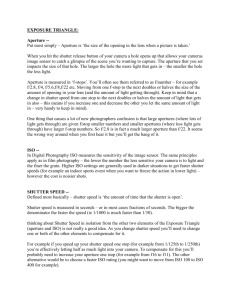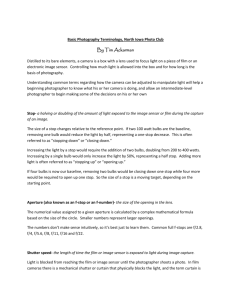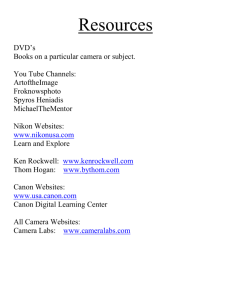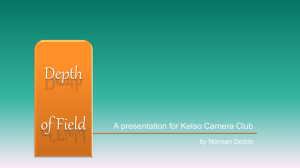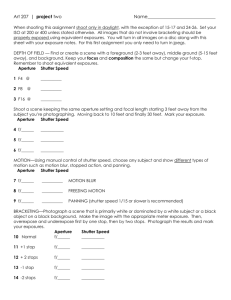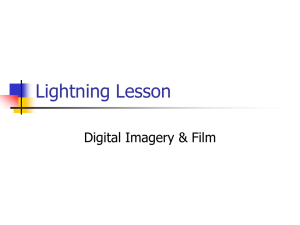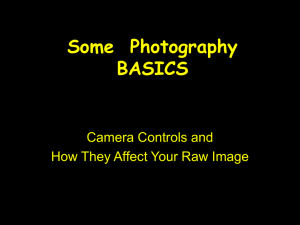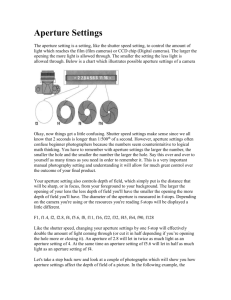Photography Basics - LOYOLA`S COMM TECH
advertisement
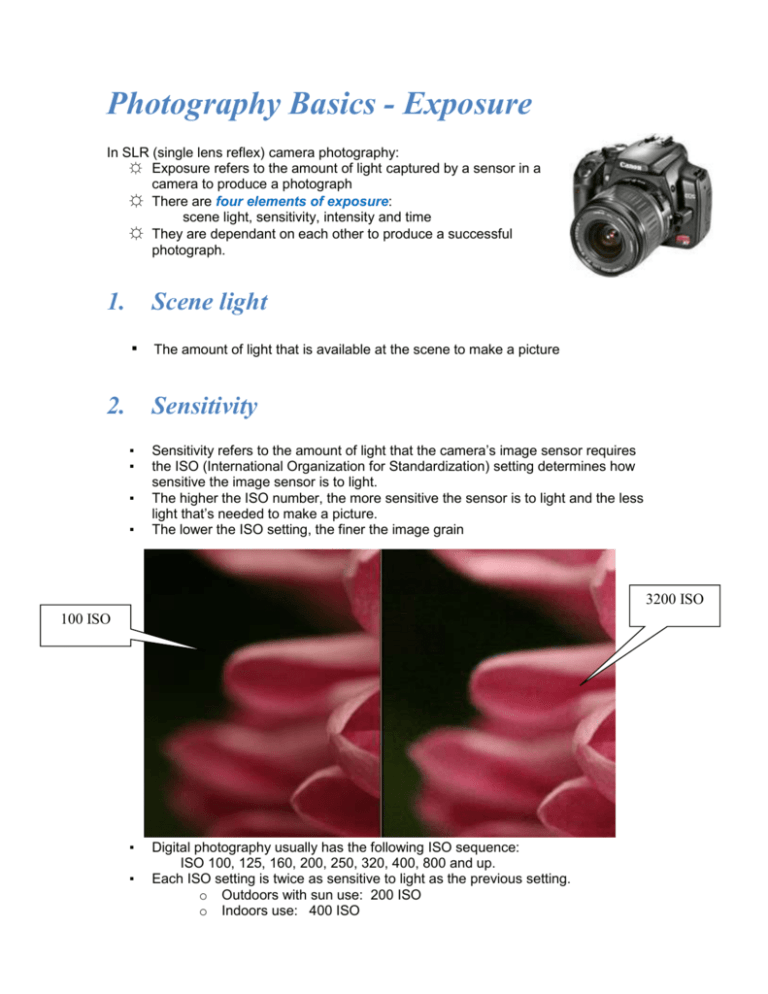
Photography Basics - Exposure In SLR (single lens reflex) camera photography: ☼ Exposure refers to the amount of light captured by a sensor in a camera to produce a photograph ☼ There are four elements of exposure: scene light, sensitivity, intensity and time ☼ They are dependant on each other to produce a successful photograph. 1. Scene light ▪ 2. The amount of light that is available at the scene to make a picture Sensitivity ▪ ▪ ▪ ▪ Sensitivity refers to the amount of light that the camera’s image sensor requires the ISO (International Organization for Standardization) setting determines how sensitive the image sensor is to light. The higher the ISO number, the more sensitive the sensor is to light and the less light that’s needed to make a picture. The lower the ISO setting, the finer the image grain 3200 ISO 100 ISO ▪ ▪ Digital photography usually has the following ISO sequence: ISO 100, 125, 160, 200, 250, 320, 400, 800 and up. Each ISO setting is twice as sensitive to light as the previous setting. o Outdoors with sun use: 200 ISO o Indoors use: 400 ISO Page 2 3. Intensity - The role of aperture ▪ ▪ The lens aperture is the size of the lens opening. It determines the intensity (amount) of light that strikes the image sensor. Lens aperture is an adjustable opening on the lens that allows more or less light to reach the sensor. Wide aperture narrow aperture ▪ Aperture is shown as a set of “f-stops” (focal stops) on the lens: The smaller the f-number the larger the aperture opening which allows more light to reach the film or image sensor. ▪ When you increase or decrease the f-stop by one setting, it doubles or halves the exposure. For example, twice as much light reaches the image sensor at f/1.4 as at f/2. Page 3 Aperture and Depth of Field ▪ ▪ ▪ Depth of field is the zone of sharp focus. The further you are away from the subject the greater the depth of field will be. Aperture is one factor that affects depth of field: small in focus zone because more light is allowed through the lens corresponding aperture: f/1.4, f/2.8, f/4, f/5.6 large or deep in focus zone because less light is allowed through the lens corresponding aperture: f/8, f/11, f/16, f/22 Page 4 Shallow Depth of Field Deep Depth of Field Description Corresponding aperture small in focus zone because f/1.4, f/2.8, f/4, f/5.6 more light is allowed through the lens Large or deep in focus zone f/8, f/11, f/16, f/22 because less light is allowed through the lens 4. Time - The Role of Shutter Speed ▪ ▪ ▪ Shutter speed controls how long the lens “curtain” stays open to let light strike the image sensor - it determines the length of time light enters the camera. Shutter speeds are shown in fractions of a second. Shutter speeds from slow to fast are: Bulb (shutter stays open as long is shutter button is pressed), 1 second, ½, ¼, 1/8, 1/15, 1/30, 1/60, 1/125, 1/500, 1/1000 etc. one fifteenth of a second ▪ When you increase or decrease a shutter speed by one setting, it doubles or halves the exposure. For example, twice as much light reaches the image sensor at 1/30 of a second as at 1/60 of a second. ▪ Shutter speed determines whether you can freeze a moving subject or allow it to be blurred in a picture: To capture motion To freeze motion: blur: set shutter speed to 1/60 try 1/30 second or or faster slower use a tripod REMEMBER: scene light, sensitivity, intensity and time are dependant on one another Page 5

